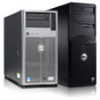Dell PowerEdge XL 5133-4 MXL 10/40GbE Switch IO Module FTOS Command Reference - Page 24
CLI Modes, EXEC mode, EXEC Privilege mode, CONFIGURATION mode, INTERFACE sub-mode, LINE sub-mode
 |
View all Dell PowerEdge XL 5133-4 manuals
Add to My Manuals
Save this manual to your list of manuals |
Page 24 highlights
www.dell.com | support.dell.com CLI Modes Different sets of commands are available in each mode. A command found in one mode cannot be executed from another mode (with the exception of EXEC mode commands preceded by the command do; for more information, refer to do Command and EXEC Privilege Mode commands). The FTOS CLI is divided into three major mode levels: • EXEC mode is the default mode and has a privilege level of 1, which is the most restricted level. Only a limited selection of commands is available, notably the show commands, which allow you to view system information. • EXEC Privilege mode has commands to view configurations, clear counters, manage configuration files, run diagnostics, and enable or disable debug operations. The privilege level is 15, which is unrestricted. You can configure a password for this mode. For more information, refer to Configure the Enable Password. • CONFIGURATION mode allows you to configure security features, time settings, set logging and simple network management protocol (SNMP) functions, and static address resolution protocol (ARP) and MAC addresses on the system. Beneath CONFIGURATION mode are sub-modes that apply to interfaces, protocols, and features. Figure 3-2 shows this sub-mode command structure. When configuring the chassis for the first time, the following two sub-CONFIGURATION modes are important: • INTERFACE sub-mode is the mode in which you configure Layer 2 and Layer 3 protocols and IP services specific to an interface. An interface can be physical (management interface, 10-Gigabit Ethernet, or 40-Gigabit Ethernet) or logical (Loopback, Null, port channel, or VLAN). • LINE sub-mode is the mode in which you configure the console and virtual terminal lines. Note: At any time, entering a question mark (?) displays the available command options. For example, when you are in CONFIGURATION mode, entering the question mark first lists all the available commands, including the possible sub-modes. Figure 3-2. FTOS CLI Modes Supported on the Aggregator EXEC EXEC Privilege CONFIGURATION INTERFACE 10 GIGABIT ETHERNET INTERFACE RANGE MANAGEMENT ETHERNET LINE CONSOLE VIRTUAL TERMINAL MONITOR SESSION 10 | Configuration Fundamentals















